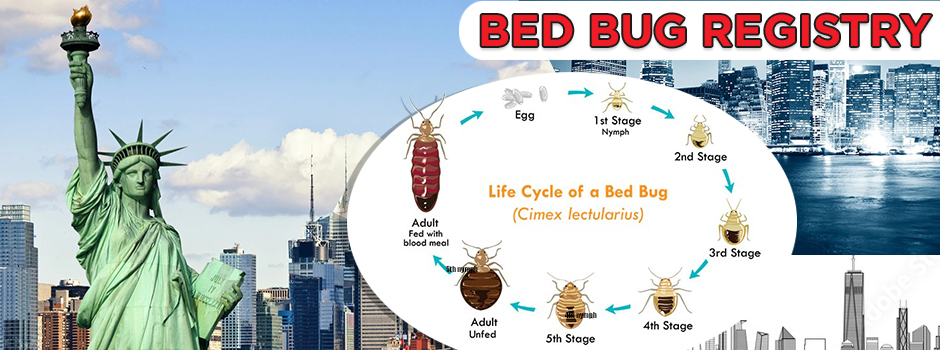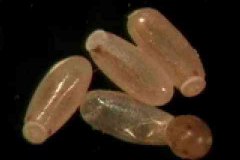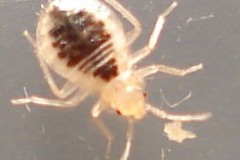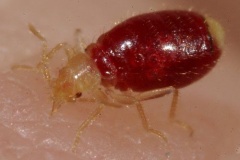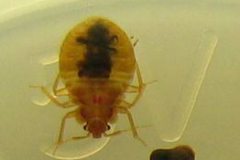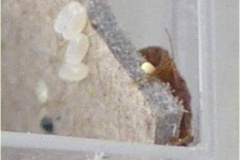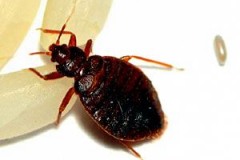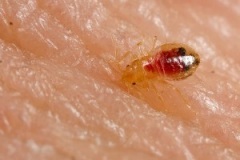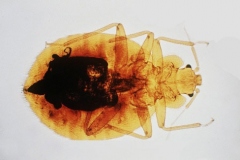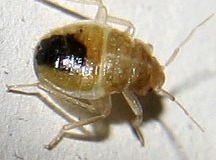Categories
- Bed Bug
- Bed Bug Cream
- BED BUG DATABASE
- Bed Bug Home Remedies
- Bed Bug Oil
- Bed Bug Remedies
- Bed Bug Spray
- Bed Bugs New York
- Bed Bugs Vancouver
- Bed Bugs World
- Bed Bugs American Samoa
- Bed Bugs Canada
- Bed Bugs Guam
- Bed Bugs North Mariana islands
- Bed Bugs Puerto Rico
- Bed Bugs United States
- Bed Bugs Alabama
- Bed Bugs Alaska
- Bed Bugs Arizona
- Bed Bugs Arkansas
- Bed Bugs California
- Bed Bugs Colorado
- Bed Bugs Connecticut
- Bed Bugs Delaware
- Bed Bugs Florida
- Bed Bugs Georgia
- Bed Bugs Hawaii
- Bed Bugs Idaho
- Bed Bugs Illinois
- Bed Bugs Indiana
- Bed Bugs Iowa
- Bed Bugs Kansas
- Bed Bugs Kentucky
- Bed Bugs Louisiana
- Bed Bugs Maine
- Bed Bugs Maryland
- Bed Bugs Massachusetts
- Bed Bugs Michigan
- Bed Bugs Minnesota
- Bed Bugs Mississippi
- Bed Bugs Missouri
- Bed Bugs Montana
- Bed Bugs Nebraska
- Bed Bugs Nevada
- Bed Bugs New Hampshire
- Bed Bugs New Jersey
- Bed Bugs New Mexico
- Bed Bugs New York
- Bed Bugs North Carolina
- Bed Bugs North Dakota
- Bed Bugs Ohio
- Bed Bugs Oklahoma
- Bed Bugs Oregon
- Bed Bugs Pennsylvania
- Bed Bugs Rhode Island
- Bed Bugs South Carolina
- Bed Bugs South Dakota
- Bed Bugs Tennessee
- Bed Bugs Texas
- Bed Bugs Utah
- Bed Bugs Vermont
- Bed Bugs Virgin Islands
- Bed Bugs Virginia
- Bed Bugs Washington
- Bed Bugs Washington DC
- Bed Bugs West Virginia
- Bed Bugs Wisconsin
- Bed Bugs Wyoming
- BedBug Removal
- BedBugs in Michigan
- Canada Bed Bugs
- Do it yourself Bed Bug
- Exterminator Bed Bugs
- Health
- Pest Inspection
- Toronto Bed Bugs
- Welcome to Bed Bugs
Registry Sites List
- Bronx Bed Bug Registry Infestation Maps, Residential And Hotel
- Brooklyn Bed Bug Registry Infestation Maps, Residential And Hotel
- Manhattan Bed Bug Registry Infestation Maps, Residential And Hotel
- Nyc Bed Bug Registry Infestation Maps, Residential And Hotel
- Queens Bed Bug Registry Infestation Maps, Residential And Hotel
- Staten Island Bed Bug Registry Infestation Maps, Residential And Hotel
Recommended Sites
Category Archives: Bed Bugs World
News Links:
Bed Bugs Southern Nevada Health District
What are bed bugs?
Bed bugs are small wingless insects that feed upon the blood of warm-blooded animals, such as humans, birds, rodents, bats and pets.
Young bed bugs are about the size of a poppy seed and adults are about a 1/4 inch long. Their bodies are oval and flat and their color ranges from nearly white (after molting) to deep brown (after feeding).
Bed bugs live in cracks and crevices and only come out at night to feed.
Do bed bugs spread disease?
Bed bugs are not known to spread disease.
Bed bugs inject a small amount of saliva into the skin while feeding. An allergic reaction to the saliva may cause the area around the bite to become swollen and itchy. Do not scratch bites, as this may worsen the irritation and itching and may lead to a secondary infection.
Why are bed bugs resurging?
International travel and changes in modern pest control practices are believed to be responsible for the resurgence of bed bugs in the United States.
Bed bugs are common in Asia, Africa, Central and South America and Europe. With the growth of international travel, bed bug infestations are steadily increasing. Since most people of this generation have never seen a bed bug, they are more likely to bring bed bugs home with them in luggage and on clothes.
In the 1940s and 50s, the pesticide DDT was liberally used in homes to fight insect infestation. With the ban on DDT in the 1970s pest control methods changed from elimination to repellent and baits. These changes make it easy for bed bugs to avoid most pest control methods.
How can I avoid bed bugs while traveling?
Check for bed bugs right after entering your hotel room.
What if I think my hotel room has bed bugs?
Most good hotels have a plan in place to deal with bed bug infestations. If you believe a room is infested with bed bugs, notify the front desk immediately. You will most likely be moved to another room.
Notify the Southern Nevada Health Districts Environmental Health Division at (702) 759-0588 to report the infestation.
To prevent bringing the bed bugs with you to the new room, have clothes washed in hot water and dried in a commercial dryer for one hour and store luggage in a sealed plastic bag.
How do I prevent bringing bed bugs home with me?
If you have visited a dwelling infested with bed bugs, the following procedures will help prevent you from bringing the pests home.
What if I think my home has bed bugs?
If you suspect a bed bug problem in your home, look for these signs:
Be aware that other insects, such as fleas, ticks and mosquitoes, can leave bites that look like bed bug bites. Bites alone cannot prove you have a bed bug infestation.
Additionally, several different kinds of insects resemble bed bugs, so any bugs found in your home should be carefully compared to pictures to confirm their identify. A pest control expert or entomologist can also accurately identify the insects you collect.
Once you have confirmed the presence of bed bugs, devise a plan to rid them from your home.
There are several things you can do to rid bed bugs from your home:
How did bed bugs get into my home?
Bed bugs come out at night and hide in the presence of light. Their size and shape make it easy for them to hide:
Bed bugs are efficient hitchhikers and are usually transported home on luggage, clothing, beds, furniture, etc. Travelers returning from countries where bed bugs are common bring bed bugs home in their luggage or clothes. Buying secondhand furniture is another way bed bugs can enter your home.
The cleanliness of the dwelling has little to do with the level of bed bug infestation. Bed bugs will thrive in any location where there are warm-blooded hosts and plenty of hiding places.
What are the rights and obligations of tenants and landlords?
Renters: Landlords and property owners have an obligation to provide safe and habitable accommodations for tenants. Tenants have an obligation to cooperate with owners and landlords. This includes preparing the home so that the pest control operator can easily inspect the rooms and treat if necessary. Visit the Landlord/Tenant Hotline webpage for more details.
Landlords: Landlords and property owners have an obligation to provide safe and habitable accommodations for tenants. Bed bug infestations can be considered unacceptable conditions.
Because bed bugs can live for months without feeding, they may be present in clean and vacant homes. Bed bugs can move between apartments through voids in walls and holes through which wires and pipes pass.
For more information on the rights and obligations of tenants and landlords, visit the Nevada Revised Statutes Chapter 118A Landlord and Tenant: Dwellings webpage.
Reporting a Bed Bug Problem in a Rental Unit
Visit the Landlord/Tenant Hotline webpage for reporting instructions. Do not come to the health district in person to submit a complaint. You may have bed bugs on your clothing or skin, which poses a risk of spreading the pests to other clients and staff.
Quick Facts
Read this article:
Bed Bugs Southern Nevada Health District
Posted in Bed Bugs Nevada
Comments Off on Bed Bugs Southern Nevada Health District
#1 Bed Bug Exterminator in Washington DC! Control …
Questions ? Give Us A Call (202) 750-4066
Hello and welcome. If youve made it this far, it is almost certain that youre dealing with some type of bug infestation. Youre probably at the end of your rope and may even feel a little hopeless. Unfortunately, the current Washington DC bed bugs have evolved to the point that theyre incredibly difficult to eliminate. And, DC ranks as one of the most problematic cities for bedbugs. However, there are solutions to such problems and were can help you find the right solution for your individualistic situation. Our bed bug control company has services the DC area for many years and we have plenty of hands-on experience with bedbugs. With our bug control expertise, youll be able to restore your sanity sooner than you could ever imagine.
Before rushing forward, you should take the time to learn more about your current situation. We would like to provide you with the reassurance that bedbugs cannot inflict too much damage. We agree wholeheartedly that theyre disgusting, annoying, frightening, and need to be eliminated immediately. After dealing with bed bugs in Washington DC for many years, weve come to learn that these critters cannot transmit diseases. Unfortunately, they do bite and they do so very often. These bites may very well cause skin irritation and could lead to the development of a rash.
To make matter worse, bedbugs have adapted over the past few years and are now capable of withstanding chemical pesticides. Researchers have determined that their shells have grown thicker and this has given them additional protection against over-the-counter and even commercial sprays. Thankfully, weve found a solution, which is safe and effective. Our bed bug specialists believe that heat treatments are the right solution for everyone!
Many people will approach the treatment process in the wrong manner. Not only is it crucial to commence with the proper pesticides, but you will also need to know where to begin. Instead of making the mistake of choosing the wrong chemicals and treatment process, you should contact us, because we are a well-qualified Washington DC bed bug exterminator.
We are not here to try to encourage you to hire us to treat your bedbug infestation. Instead, we are here to service you in other ways. Our technicians will gladly assist you choosing the proper pesticide products and educate you on the proper usages. Believe it or not, many people make the mistake of utilizing outdoor chemicals to treat the inside of their home. Outdoor pesticides contain chemicals that may contain toxic ingredients that can make humans and animals very ill, if used indoors.
Our pest management firm is here to provide you with the maximum amount of peace of mind and to guide you along the way. Were here to help you find the best bed bug solution for your unique needs. Well also offer bed bug prevention tips to ensure youre able to keep those bugs at bay for good.
Bed bug exterminators in Washington DC have access to a large array of brand pesticides. These products are classified as commercial-grade, meaning that they are much stronger than the average over-the-counter pesticide. We also have access to environmental friendly pest control products that will not cause any harm to humans, pets, and the environment. Contrary to believe, all natural and organic pesticides are very effective in eradicating bedbugs, roaches, and termites. In fact, many of these products contain ingredients that are capable of killing the parasite on contact.
When utilizing environment friendly pesticides, you never have to worry about evacuating your home for more than a few hours. Traditional pesticides were so powerful and smelly that homeowners were forced to vacate their home for several days after each treatment. Leaving your home unattended for this length of time can be stressful, but being away from your normal living environment could be much worse.
We have a treatment package for everyone. Our packages consist of an effective treatment and maintenance program, because we know that you never want those pesky bedbugs to return. Rely on us and we will eradicate your bedbug infestation and keep your home pest-free forever.
Although each situation is different and no two consumers are the same, there is a new bedbug treatment that will prove to be reliable each and every time. Our company has come to the conclusion that the best way to eliminate bedbugs is by utilizing heat. After extensive research and with plenty of experience, weve learned that heat is the best bed bug treatment Washington DC exterminators can offer. And, wed like you to know that heat treatments are cost effective, environmental friendly, and convenient for us and you.
Bed bug heat treatments have proven to be the best choice for homeowners and business owners. Our bed bug heat machines are capable of getting rid of the bed bugs regardless of the situation. When dealing with bedbugs in your home and business, you need the most effective solutions. Our pest control firm will firm the problem with the most reliable bed bug treatment option of all.
Our pest professional sincerely cares about you and your family. We aim provide you with the lowest cost solution, while simultaneously ensuring getting rid of those bugs is a realistic possibility. We are happy to offer home inspections to business owners and homeowners. We strive to provide the consumer with the lowest cost, the best service, and maximum transparency. Take advantage of our inspection service to ensure that youre actually dealing with legitimate bed bug infections.
We can help you eliminate bed bugs. However, if your home is not infested, well tell you about it. Our exterminator company is honest and well tell you the truth one way or another.
We strive to provide Washington residents with the most effective bedbug treatments at the most affordable cost. After many trial and errors, we truly believe weve perfected our game plan and have established our company as the most reliable company in all of Washington. With our heat treatments, your bug infestation will be gone before you know it. Below, youll find a list of benefits associated with using us for your bed bug problem.
Our company representatives are waiting by the phone and are eager to hear from you. We sincerely hope youll give us the chance to help you reclaim your home and truly believe youll be glad you did, once the extermination has been completed. Well prove to you that we can greatly outshine the other pest control companies in your area.
Call Us @ (202) 750-4066
See original here:
#1 Bed Bug Exterminator in Washington DC! Control ...
Posted in Bed Bugs Washington DC
Comments Off on #1 Bed Bug Exterminator in Washington DC! Control …
What Do Bed Bugs Look Like (53 PICTURES OF BED BUGS)
Sometimes seeing pictures of bed bugs can help you identify if you're attracting bed bugs and whether or not you need to start doing something about it.
Im sure some of us remember that old phrase...
Dont let the bed bugs bite
For the longest time most people thought bed bugs were just some made up creature!
If youre reading thisarticle, then its likely you have experienced (or are currently experiencing) a run in with bed bugs.
To help you out, we've curated 53 of the best images and pictures of bed bugs I could find that showcase what a bed bug looks like so hopefully you can identify what it is thats pestering you.
Ready? Let's get started!
Bed bugs are flat reddish brown oval insects ranging from 4 to 5mm in length. They feed on blood and are only active during the night time.
I keep a very clean house, will that keep bed bugs away?
Not entirely, bed bugs dont care if your house is clean or dirty.
Although, if your house is clean, it will be easier to spot bed bugs if you have them.To keep bed bugs at bay you should take proactive measures such as:
Read Also:What are the best steamers and vacuums for bed bugs?
Bed bugs, although very annoying, pestering, and gross, are not carriers of disease unlike mosquitos, which can carry various diseases.
What they will do is bite you multiple times in close proximity while you sleep. The bites themselves arent painful, but will leave a reddish hive on your skin. The biting area will look very similar to a mosquito bite althoughslightly larger andA LOT itchier.
After they bite, they will retreat back to their hiding space. Click here for more on the dangers of bed bugs.
Click here for more information on treatments related to bed bug bites.
Need help getting rid of a bed bug problem. You need tocheck out this articlewhen you have a couple minutes.
Bed bugs tend to live in the seams of your mattress, in the box spring, in the folds of loosewall paper,in your sofa, under your rug, and any other area that is close to a feeding source. Bed bugs want to be near where they feed, so expect them to be close by when you sleep if you have them.
Youll find that a lot of bed bugs live in hotels because of the frequency at which people come and go inside of them. Bed bugs dont prefer hotels, rather there are a lot of people and its likely that someone will be carrying a bed bug at one point or another.
Also, unlike lice, bed bugs DON'T like to live in your hair! Some people are convinced and deathly afraid of going to sleep because of this. Not true, continue reading for pictures!
Bed bugs are VERY hard to get rid of mainly because they hide so well. Depending on the size of the infestation, you might have to look very hard before you find the culprit and stop the spreading.
If youre actively getting bitten, do the following things:
Click here for our complete guide on bed bug removal.
Want to skip all this research and just hire a decent exterminator for your bed bug problem?
Click here to check out our exterminator search tool where we instantly send you free quotes from trusted (and thoroughly vetted) exterminators in your local area.
(Process takes about 30 seconds)
53 of the best Images and picturesof bed bugsBed bug size comparisons
9. Here is a picture of an adult male bed bug being sized at about 5 milimeters.
Want to skip all this research and just hire a decent exterminator for your bed bug problem?
Click here to check out our exterminator search tool where we instantly send you free quotes from trusted (and thoroughly vetted) exterminators in your local area.
(Process takes about 30 seconds)
Want to skip all this research and just hire a decent exterminator for your bed bug problem?
Click here to check out our exterminator search tool where we instantly send you free quotes from trusted (and thoroughly vetted) exterminators in your local area.
(Process takes about 30 seconds)
Want to skip all this research and just hire a decent exterminator for your bed bug problem?
Click here to check out our exterminator search tool where we instantly send you free quotes from trusted (and thoroughly vetted) exterminators in your local area.
(Process takes about 30 seconds)
That's it folks. 53 pictures and images of bed bugs. Hopefully now you have some sort of feel for what a bed bug looks like and how to spot one in your own home.
If after going through these images and you think you might have an infestation, we highly recommend contacting a 3 to 5 exterminators for quotes on bed bug removal. Bed bug removal is a very delicate process, which requires a highly skilled exterminator!
Please Note*** If you are attempting to kill or remove a bed bug problem, we highly recommend you consult and potentially hire a licensed exterminator or else you risk making your bed bug problem worse. Click here for our tool to help you find free quotes from pre-qualified exterminators in your area.
Here is the original post:
What Do Bed Bugs Look Like (53 PICTURES OF BED BUGS)
Posted in Bed Bugs Quebec
Comments Off on What Do Bed Bugs Look Like (53 PICTURES OF BED BUGS)
Action Bed Bug Extermination New Jersey | New Jersey Bed …
breaking news
Action Termite and Pest Control is featured on NBC's Today Show.
Action Termite and Pest Control is featured on NBC's Today Show.
Action Termite and Pest Control is featured on NBC's Today Show.
We use the latest technology and chemicals to provide you with a superior mosquito control solution. Our friendly technician will perform an exterior fogging to your yard. Treatment areas will include the limbs of shade trees, flower beds, shrubs, tall grass and shaded areas around buildings where mosquitoes congregate. These areas are treated with an approved Adulticide to control your existing infestation. Any areas that contain standing water will be treated by the dispersing of a larvacide granular.
Actions Mosquito Control is an effective way to reduce the mosquito population around your home or office. Action uses a variety of methods to ensure the best possible results including: Larvacides, Adulticides, Source Reduction, Biological Controls, and Barrier Treatments.
Call 1-800-920-0906 to sign up for our mosquito program.
Termite Control, Termite Inspections, Termite Certifications, & Termite Damage Repair for over 40 years by Action Termite and Pest Control.
Subterranean termite control in New Jersey involves placing a barrier around your home. When it comes to gaining access to your home, termites are amazingly proficient. The last thing you want to do is make their job easier. Fortunately, the steps below will help you prevent termites from becoming a problem in the first place, or help keep them from coming back after a Termidor Certified Professional like Action Termite & Pest Control, has gotten rid of them for you.
FREE ESTIMATE FOR TERMITE CONTROL
Action Termite and Pest Control has been delivering superior Termite Control Services since 1971. Action utilizes the latest technology and chemical applications to eliminate termites from your environment.
Call 1-800-920-0906 or email[emailprotected]to schedule an appointment.
Get to knowActions Professional Staff!
Here is the original post:
Action Bed Bug Extermination New Jersey | New Jersey Bed ...
Posted in Bed Bugs New Jersey
Comments Off on Action Bed Bug Extermination New Jersey | New Jersey Bed …
Georgia Bed Bug Blog – This is an information blog about …
1. Affordability2. Communicating that they have an issue due to cost.3. Do it yourself treatments Safety Inneffectiveness4. While trying to do it themselves they spread to other units5. Discarding of furniture (Not wrapping and spreading)6. Other Tenants picking up said discarded furniture
1. Education We provide Classes for Tenants and Staff to familiarize them with what they look like and how they are transferred.
2. Inspect Furniture before new move-ins.
3. Have unit inspected by a professional right after a tenant moves out. Get inspection report with findings. If not there can be a battle if there are bed bugs found within the first few months of a new tenant. The tenant will claim they were there when they moved in. Landlord cant prove they werent.
4. Let the tenants know that if they report a bed bug situation the landlord will handle it and make the tenant pay affordable payments until it is paid.
5. Repeat (numerous) offenders at some point will be evicted if not reported.
Tenants need to realize that Bed Bug Treatments are expensive and Landlords dont want them in their properties. Landlords need to realize that in many cases the tenant really didnt do anything wrong. Through education the tenants can be taught what not to do when it comes to bed bugs.
Excerpts from
Think Like A Bed Bug by: Denise Donovan (IBBRA.org)
When I was deciding on the title, as part of my entomological research, I knew that in order to combat any insect you need to know their traits and behavior in order to outsmart them and thus Think like a Bed Bug became the name of my book.
Thanks Mike for addressing this so well.
Infestations left untreated or not treated correctly because of not understanding the insect seem to be one of the biggest causes of the continued spread within multi-unit properties. Managing bed bugs takes more than a chemical or heat treatment; it takes knowing thy enemy.
Think Like a Bed Bug
Bed Bug Supplement
Know thyself, know thy enemy. A thousand battles, a thousand victories. Sun Tzu, the Art of War
January 4, 2016 Sydney E. Crawley, Michael F. Potter and Kenneth F. Haynes
Around 512 B.C., Sun Tzu and the brightest military minds agreed: to defeat the enemy, you must know the enemy. Fast-forward to today and researchers and pest managers alike are coming to the realization that there are no silver bullets in todays war against bed bugs. Nonetheless, scientists around the world continue to study bed bug biology and behavior in hopes of finding chinks in their seemingly impenetrable armor. The intent of this article is to give practitioners a better feel for what everyday life is like if youre a bed bug, and how some of these insights may lead to improvements in management.
BIOLOGY BEGETS BEHAVIOR.To decipher bed bug behavior one must first know the traits that allow them to survive and produce offspring. The most critical adaptation for survival is their ability to feed exclusively on blood. After hatching, bed bugs molt, shedding their exoskeleton five times before reaching adulthood. Each of these five progressions requires that the insect take another blood meal. Bed bug nymphs seemingly behave similarly to adults, although more research should focus on juvenile bed bug behavior. We do know that young nymphs are more prone to desiccation and may have dispersal habits that differ from adult bugs.
Once a bed bug is an adult, they will need to continue to take blood meals in order to lay eggs and produce offspring. Feeding occurs during times when the host (usually us) is least likely to be aware of their presence. Thus, they forage for blood when we are fast asleep, and their bites are not easily detectable. The period during and directly after feeding is often when mating occurs. Mating behavior among bed bugs is traumatic for females, with males piercing their abdominal cavity directly. Each bout of feeding puts a female at risk for roughly five traumatic inseminations, not necessarily from the same male suitor. These excessive mating attempts can reduce female lifespan. Mated female bed bugs lay approximately 120 eggs (on average) in their lifetime, enabling infestations to grow rather quickly. These biological principles give rise to predictable behaviors displayed in the field, some with implications for management.
Bed bugs characteristically form dense, hidden aggregations in small spaces.
LOVE THE ONES YOURE WITH.If youre a bed bug, there arent many opportunities for privacy. From the moment a pinhead sized neonate emerges from an egg, other bugs both younger and older arent far away. In fact, scores of individuals may be sharing a crevice no wider or deeper than a toothpick.
The tendency for bed bugs to form tightly packed, dense, hidden aggregations is one of the most striking behaviors they exhibit. Within these aggregations, a bed bug will grow, defecate, and mate with other bed bugs that are typically from the same maternal lineage. This aggregation behavior represents a significant advantage to a parasite that feeds on a host that routinely sleeps in the same place. Many of the close relatives of bed bugs, including bat and bird bugs, share the same adaptation.
When deciphering bed bug behavior, it helps to think in terms of what may be in it for the bug. For instance, the tendency of bed bugs to form aggregations would not exist if there were not some intrinsic benefit. Recent studies have revealed that bed bug nymphs reared in groups develop faster than nymphs reared in isolation (Saenz et al. 2014). It also has been shown that bed bugs in an aggregation avoid dehydration much more effectively than bed bugs held alone (Benoit et al. 2007). This probably helps account for the remarkable length of time that bed bugs can survive without taking in any blood for months, or even more than a year in cooler environments. Seemingly, bed bugs that stick together may fare better when the going gets tough and hosts are scarce. Other benefits that have been proposed but not verified include the ability to discourage predators (although predation on bed bugs in our homes is relatively rare), the transfer of beneficial microorganisms between group members, increased opportunities for mating, or caring for offspring. These behaviors exist in other insects that aggregate, but have not been confirmed for bed bugs.
Bed bugs detect chemical cues in the environment with their antennae.
Although aggregating has clear benefits, it is possible to have too much of a good thing. There are also potential risks associated with large aggregations. For instance, the larger the aggregation gets, the more likely you are to become conspicuous to humans trying to kill you. Additionally, competition for mates might become fiercer within these large groups. Perhaps your risk of infection from fungi or other pathogens rises as feces and other debris accumulate in increasingly crowded areas? These potential risks may explain why some researchers have observed a cap to aggregation sizes, which may help us to one day predict why and when bugs within an aggregation may leave their current setup for something better (more on this later).
CONVERSATIONS WE CANT HEAR.Much progress has been made in our understanding of why bed bugs aggregate. For a bed bug to detect the presence of another bug and begin the formation of a group there is communication between them. Insects often send messages to one another to initiate a social interaction. An effective message will be received and interpreted by another bug and a behavioral response, such as aggregating, will follow.
Although not apparent to us, bed bugs are talking in this manner all the time. These conversations are chemical in nature, and since the chemical message benefits the signaler and the receiver we call them pheromones. Pheromones are the main way insects communicate, and those that cause bed bugs to aggregate are appropriately termed aggregation pheromones. Bed bugs detect these compounds with receptors located on their antennae, which serve as the olfactory organ for most insects. Although the social nature of bed bugs cannot be compared to the caste systems of termites or ants, it should be clear that bed bugs do in fact have numerous important social interactions within aggregations.
Bed bugs have few natural enemies, but sometimes are eaten by spiders and ants.
Aggregation pheromones are deposited by bed bugs when they find a suitable place to call home the seam of a mattress or recliner, crevices of a nightstand, etc. We know that there are two parts to a successful aggregation message to other bugs.
One part of the message is released into the air with some of these compounds coming from the scent glands. The other part is deposited directly onto the surface through feces or shed skins and persists in the environment for longer periods of time. All bed bugs respond to the aggregation pheromone.
On substrates, five volatile compounds within the feces or on shed skins attract bed bugs to safe places, while a longer-lasting component (histamine) causes bed bugs to stop and remain there (Gries et al. 2015). The arresting power of the compounds is so powerful that they cause bed bugs to rest on surfaces treated with certain insecticides, which otherwise they may find repellent (Romero et al. 2009). Once the bed bugs have found a suitable place to hunker down, the behavior is reinforced through touch; similar to cockroaches, bed bugs respond positively to contact from other bugs and from the walls of small spaces.
Bed bug feces contain a pheromone that causes bed bugs to aggregate.
LEAVE THE ONES YOURE WITH.Although bed bugs are considered sedentary creatures, there are many times when they leave the security of their aggregation. Bed bugs move when theres a perceived threat, when they need to feed, or when their current location is no longer hospitable such as when a host is no longer available.
Bed bugs tend to respond negatively to light so they may move away from light toward darkness. There is also some evidence to suggest that in addition to light and dark detection, bed bugs may use vision to differentiate between darker and lighter harborages, with a preference for darker colors. Understanding the mechanisms and triggers of bed bug movement will help in preventing their spread from one location to another.
To better understand bed bug dispersal we need to ask ourselves, Why would it benefit a bed bug to leave home? A bed bug on the move risks death when detected by the host. Even without insecticides, humans are a lethal threat and perhaps their greatest risk of a quick demise. Wouldnt it be wiser to remain inconspicuous? Unfortunately, for us, bed bugs have finely tuned adaptations that allow them to avoid periods of time where their movements would be riskiest.
Bed bugs require blood to grow and reproduce, so adaptations for finding a host and taking a blood meal are critical for their survival. Feeding strategies have been fine-tuned over the eons that bed bugs and their buggy ancestors have been parasitizing humans, so theyve become experts at the process. Every time a bed bug feeds they risk detection and death, so quick movement to and from the host is of paramount importance. Like many other animals, bed bugs follow a circadian rhythm, exhibiting predictable behaviors that occur cyclically over 24-hour periods. For bed bugs, these changes are set by the change from light to dark and in fact, bed bugs move more in the dark than in light even in the absence of host cues.
This cyclical pattern includes seemingly random movements that are not directed towards or away from the host, but are, nonetheless, the first step to finding their next meal.
Once theyre triggered by nightfall to move away from aggregations, research indicates that carbon dioxide emission is one of the first cues that stimulate bed bug movement from a distance. As the bug gets closer to a warm-blooded host, their movement becomes more directed as heat is detected. Bed bugs have specialized sensory structures on their antennae that can detect even small fluctuations in temperature. However, bed bugs are not akin to heat-seeking missiles it takes time and many blundering movements based on heat gradients and elevated levels of carbon dioxide to make their way to the host. The exact distances over which bed bugs use heat and carbon dioxide to fine tune their movements are still in question. Determining whether these directed movements start at a few feet or a few inches from the host requires following the movements of individual bed bugs before feeding.
Bed bugs spotted by humans often suffer a quick demise.
The research regarding attraction to human odors is also controversial. Early research suggested that skin odors could have a subtle effect on host attraction, but not nearly as pronounced as the effect of heat. These results should be taken with some caution, as other studies have actually shown that human perspiration is repellent. More work will be necessary to tease apart the role of human odors on bed bug host-seeking. It seems safe to conclude, however, that heat, carbon dioxide and darkness are definitely triggers for most bed bug movement. It could be that some host cues provide directional information (such as heat, which our lab observed directional orientation within 12 inches; Haynes et al. 2008), while others such as carbon dioxide function more as activators, intensifying random movements that are innately turned on each night. (See figure above.)
DO NOT DISTURB.Not all bed bug movements are meant to help them find food; they also may move or disperse in response to threats. Bed bugs emit alarm pheromones when they are disturbed. Interestingly, the bed bug alarm pheromone contains two of the same compounds as the aggregation pheromone, but they are released in much higher quantities when the bed bugs are alarmed. At these levels, these compounds stimulate immediate, rapid movement away from the current location. Unfamiliar touches, light or high, steady levels of carbon dioxide/wind trigger the release of these compounds and subsequent movement. Alarm pheromones, like most chemical compounds for bed bugs, also are detected with the antennae. Humans actually can smell the volatile release of alarm pheromones, that oft-described obnoxious sweetness or buggy odor that is sometimes evident with heavy infestations. The alarm odor is perhaps most apparent when several bugs are confined in a small container and gently shaken.
Tracks of individual bed bugs in a laboratory test arena. Bed bugs cover a lot of ground at night even when not stimulated by a host (top). Note how they tend to follow the edges of the test arena. Movement is more directed when a heat source warmed to human body temperature is provided (below). (Haynes et al. 2008, PestWorld)
The research regarding movement ofunfedbed bugs needs more study. We know that bed bugs move more frequently when they have not fed within a week when compared to bugs that recently fed. However, bed bugs held for five weeks without food moved significantly less than recently fed bugs. This may be a way for a bed bug to conserve energy stores in times when the host is temporarily absent (Romero et al. 2010). We still need to determine whether longer periods without food (such as when an apartment becomes vacant) lead to dispersal away from home base, as it appears to in the bat bug. Complaints involving bat bugs in dwellings often are associated with host dispersal or death.
An important question in respect to management is How likely is a bed bug to move from one apartment to another and if they move, how far can they go? Previously, there was a debate focused on whether adult females disperse more than adult males, and it was suggested that females run from males in the field because of the damage resulting from excessive traumatic matings. Some laboratory studies seemed to contradict this hypothesis. A recent discovery (Cooper et al. 2015) that more marked females than males were more likely to be found in areas far removed from the place where they were marked is likely to renew the debate. The additional observation that all instars of bed bugs are more mobile than was once postulated may also change the way that we think about dispersal. Obviously it remains critical to know if mated females are in fact more likely to disperse (since they could start a new population), thus more work should be aimed at supporting or refuting this claim.
SILVER BULLET BED BUG TRAP?When an insect relies heavily on communication using pheromones (such as many moth species) it may be possible to trick the insect into honing in on a trap baited with synthetic pheromone blends. Recently, the elusive contact and volatile aggregation pheromone used by bed bugs was deciphered (Gries et al. 2015). This led to high hopes that a synthetic lure could be produced that would effectively detect the presence of infestations in their initial stages. While the recent findings are encouraging, there may be significant hurdles to the utility of such an approach. It is becoming increasingly evident that bed bugs do not rely on pheromones in the same way as many other pest insects that hone in on pheromone sources from great distances. Potent long-range pheromones used by the industry to successfully monitor stored product pests may not work for bed bugs, because it is likely that communication is close range. In fact, one of the main compounds in the aggregation pheromone, histamine, requires direct touch from the bed bug for arrestment and may be detected via taste, not smell.
Furthermore, sex attractant pheromones that have the most impressive value in insect detection for pests such as the Indianmeal moth are not (as far as we can tell) part of the bed bugs repertoire. Traps baited with synthetic compounds will need to compete with former and existing aggregations of live bed bugs whose interactions are being reinforced by tactile contact. While theres hope for improved detection using pheromone traps, the industry should probably temper its expectations that the technology will be a panacea in the continuing effort to detect low-level infestations.
Various traps already have been marketed for bed bugs utilizing heat, CO2 and other host odors. However, when bed bugs recently have fed, responses to host cues such as carbon dioxide emission diminish. Thus, at any given time, these traps would not be attractive to the portion of the bed bug population that has recently fed to satiation. To reliably detect bed bugs at low levels, traps would presumably need to be placed in multiple locations within the dwelling, translating to higher cost and conspicuousness. We also know that the concentration of carbon dioxide changes rapidly from the point of exit (nose, mouth), to alongside the skin, to the area surrounding a host. We have not yet honed in on the most attractive concentration for bed bug movement, or determined whether carbon dioxide would perform better released in waves/pulses rather than steady streams.
INTRODUCTION OR INFESTATION?We often hear reports of a school, office, library or clinic that shut down over the presence of one to two bed bugs. The concern often stems from a presumption that one bug can turn into several and that people are likely to transport them home. A key question in respect to whether one bug will turn into several is this: Will it find a host, a mate and an aggregation offering the communal benefits noted previously? In some cases, especially when there are a few widely scattered bugs, it can be as hard for a bug to find us as it is for us to find them. Finding a mate will be no sure bet either, especially if only one bug was introduced, or two bugs of the same sex. The biggest risk of infestation occurs when a fed and mated adult female is introduced, because she has the potential to lay eggs.
However, this still does not ensure that she or her offspring will be able to find a suitable host, especially in settings where there is no sleeping person. All in all, it is probably safe to say that introductions of small numbers of bed bugs into schools, offices, libraries, retail stores and other non-bed environments are unlikely to turn into large infestations as is more common in residences. A bed bug spotted in such places necessitates action but seldom closure/cessation of operations. While its easy to overreact in these situations, resources are better spent educating workers and following established protocols.
WRAP-UP.Understanding insect behavior has long helped the industry battle cockroaches, termites, ants and other foes. Learning to think more like a bed bug should yield similar benefits. Although eradicating infestations is the end-goal, there are other benefits to understanding their cryptic ways. Thinking like a bed bug makes us better inspectors and enhances our ability to predict their movements within buildings. It also enables more tactical strikes with insecticides and other treatments. Understanding bed bug behavior empowers the industry to communicate more effectively with the public on topics ranging from pretreatment preparation to prevention. If the strategy of knowing thy enemy worked for Sun Tzu, then maybe we can put it to work for us, too.
Photos M.F. Potter
REFERENCES
Benoit, J.B., N.A. Grosso, J.A. Yoder and D.L. Denlinger. 2007. Resistance to dehydration between bouts of blood feeding in the bed bug,Cimex lectulariusis enhanced by water conservation, aggregation, and quiescence. Am. J. Trop. Med. Hyg. 76): 987-993.
Cooper, R, C. Wang and N. Singh. 2015. Mark-release-recapture reveals extensive movement of bed bugs (Cimex lectulariusL.) within and between apartments. PLoS One. 10): e0136462. doi:10.1371/journal.pone.0136462
Gries, R., R. Britton, M. Holmes, H. Zhai, J. Draper and G. Gries. 2014. Bed bug aggregation pheromone finally identified. Angew. Chem. 54): 1135-1138.
Harraca, V., C. Ryne and R. Ignell. 2010. Nymphs of the common bed bug (Cimex lectularius) produce anti-aphrodisiac defense against conspecific males. BMC Biol. 8): doi:10.1186/1741-7007-8-121
Haynes, K.F., A. Romero, R. Hassell and M.F. Potter. 2008. The secret life of bed bugs. Pest World. Jan/Feb: 4-8.
Romero, A., M.F. Potter and K.F. Haynes. 2009. Behavioral responses of bed bugs to insecticide residues. J. Med. Entomol. 46): 51-57.
Romero, A., M.F. Potter and K.F. Haynes. 2010. Circadian rhythm of spontaneous locomotor activity in the bed bug,Cimex lectulariusL. J. Insect Physiol. 56): 1516-1522.
Saenz, V.L., R.G. Santangelo, E.L. Vargo and C. Schal. 2014. Group living accelerates bed bug (Hemiptera: Cimicidae) development. J. Med. Entomol. 51): 293-295).
Mistaken Identities
The alarm pheromones of bed bugs have other interesting functions as well. Juvenile bed bugs release alarm pheromones for their own protection against other bugs specifically, misdirected mating attempts by adult males. A unique pheromone blend (consisting of four compounds) is released by young bed bugs when sexual interest from adult males is directed their way. Newly fed 5th instar nymphs closely resemble adult females in size and shape, making them a target for mating attempts from overzealous males. These traumatic mating attempts are costly for wounded nymphs and a waste of time for males, since they will produce no offspring (Harraca et al. 2010). Adult males also release alarm pheromones to deter homosexual mating attempts from other male bed bugs (Ryne 2009). Clearly, there are intriguing and important social interactions between bed bugs. Some may even have future implications for management.
See more here:
Georgia Bed Bug Blog - This is an information blog about ...
Posted in Bed Bugs Georgia
Comments Off on Georgia Bed Bug Blog – This is an information blog about …

 Residence
Residence  Location
Location 
